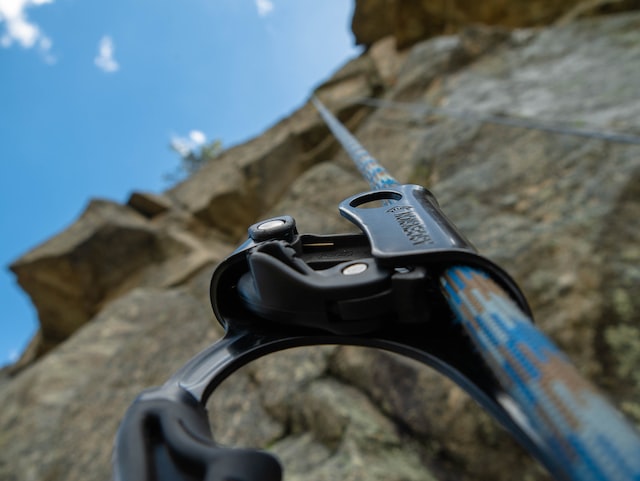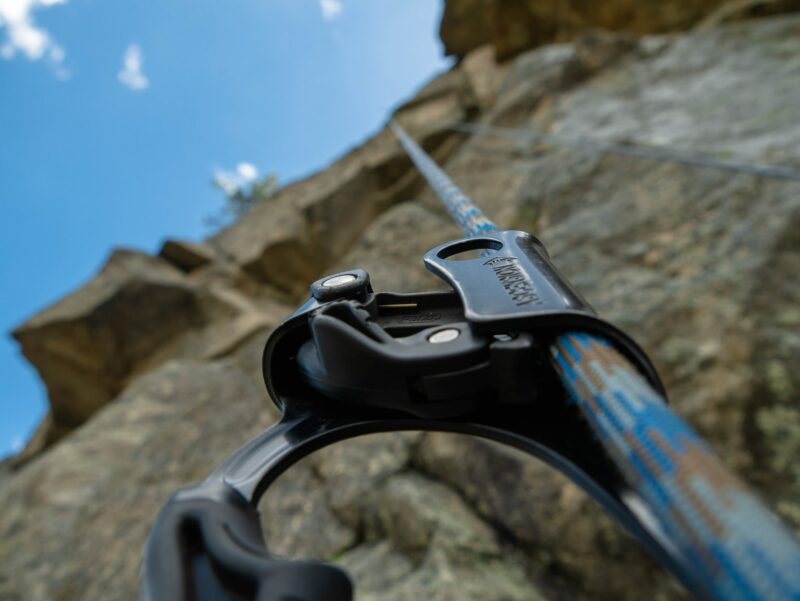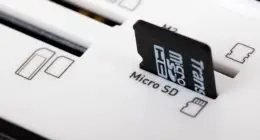Simply put, an Ascender is something that goes up ( from Bottom to Top) while a descender is something that goes down ( Top to Bottom )
What is an Ascender?
(Photo by Malachi Brooks on Unsplash)

Ascenders are typically used in mountaineering, caving, and industrial applications where workers need to be able to safely climb ropes or ladders.
an ascender usually is attached to the body above the waist
An ascender is a device used to assist in the climbing of steep slopes or inclines. It is typically a rope or cable attached to a harness worn by the climber, which can be tightened or loosened to provide more or less assistance as needed.
Ascenders are often used in rock climbing, mountaineering, caving, and other activities where ascending a steep slope is necessary. They can be used alone or in conjunction with other devices, such as pulleys, to create a mechanical advantage that makes the climb easier.
There are two main types of ascenders: tension-loaded ascenders and camming ascenders.
Tension-loaded ascenders use friction to grip the rope, while camming ascenders use teeth or cams to grip the rope.
No matter what type of ascender you use, proper technique is essential for safety. Be sure to read the instructions carefully and practice using the device before attempting
What is a Descender?
A descender is a device used to descend a rope or ladder, a descender is attached to the body below the waist.
Descenders are typically used in rappelling, canyoneering, and industrial applications where workers need to be able to safely descend ropes or ladders.
How to use an ascender
If you’re looking to ascend, an ascender is a device for you. Using an ascender, climbers can attach themselves to a rope and pull themselves up. Here’s how to use one:
- Attach the ascender to your harness with the carabiner. Make sure the gate is secure.
- Clip the locking biner onto the rope.
- Put your foot in the stirrup and stand up, using your body weight to tighten the rope. You may need to wiggle a bit to get comfortable.
- Use your hands to grip the handles of the ascender and push up, continuing until you reach your desired height.
How to use a descender
There are a few different ways you can use a descender. The most common way is to attach it to your harness and clip it into the rope below you. This way, if you fall, the descender will stop you from falling all the way to the ground.
Another way to use a descender is to tie it off to an anchor point and lower yourself down. This is often used when rappelling or when working on something at a height where you need both hands free.
When using a descender, be sure to keep your body close to the wall or surface you’re descending. This will help you control your speed and prevent you from swinging out and away from the wall. If you’re not comfortable with using a descender, many instructional videos and articles online can help you learn how to use one properly.
Can you rappel with an ascender?
An ascender is a mechanical device used to assist in climbing on a rope. It can be used for Rappelling, which is the controlled descent down a slope using a rope. An Ascender essentially grips the rope and allows the user to slide down the rope while controlling their speed with their handbrakes.
Descenders, on the other hand, are devices that are attached to the belay device and used to lower a climber down a pitch. They work by applying friction to the rope, which slows and controls the descent.
Can you use a GRIGRI as a descender?
As the name suggests, a GRIGRI is primarily designed as an ascender. An ascender is a device used to ascend a rope; in other words, it helps you climb up. A descender, on the other hand, is used to rappel down or lower yourself on a rope. So while a GRIGRI can technically be used as a descender in some situations, it’s not the ideal tool for the job and there are better options out there.
What are ascenders and descenders in handwriting?
(Photo by Estée Janssens on Unsplash )

When you think about handwriting, you might not think about the individual parts that make up each letter. However, there are some key features to look for when you’re trying to identify different handwriting styles. One of those features is whether the letters have ascenders and descenders.
Ascenders are the strokes that extend above the main body of the letter, like the stem of a lowercase “h”.
Descenders are the strokes that extend below the main body of the letter, like the tail of a lowercase “p”.
Not all letters have both ascenders and descenders (like the letter “x”), but many do.
So why is it important to know about ascenders and descenders? Well, they can help identify different handwriting styles. For example, someone with very tall ascenders or very long descenders might have a more dramatic style, while someone with shorter ascenders and descenders might have a neater and more straightforward style.
Of course, there are lots of other factors that go into identifying someone’s handwriting style, so don’t rely on ascenders and descenders alone. But if you’re trying to figure out what makes someone’s handwriting unique, you can pay attention to the way they write their ascenders and descenders!
What is the meaning of the word descender?
In typography, a descender is the portion of a letter that extends below the baseline of a font. The line that forms the bottom of most letters such as “p” and “y” is the descender line. Some fonts also contain descenders on other letters such as “g” and “j”.
What is the purpose of ascender?
The purpose of an ascender is to extend the height of a lowercase letter, such as a, b, d, and g. By adding an ascender to these letters, they appear taller and are easier to read.
Photo by Malachi Brooks on Unsplash









